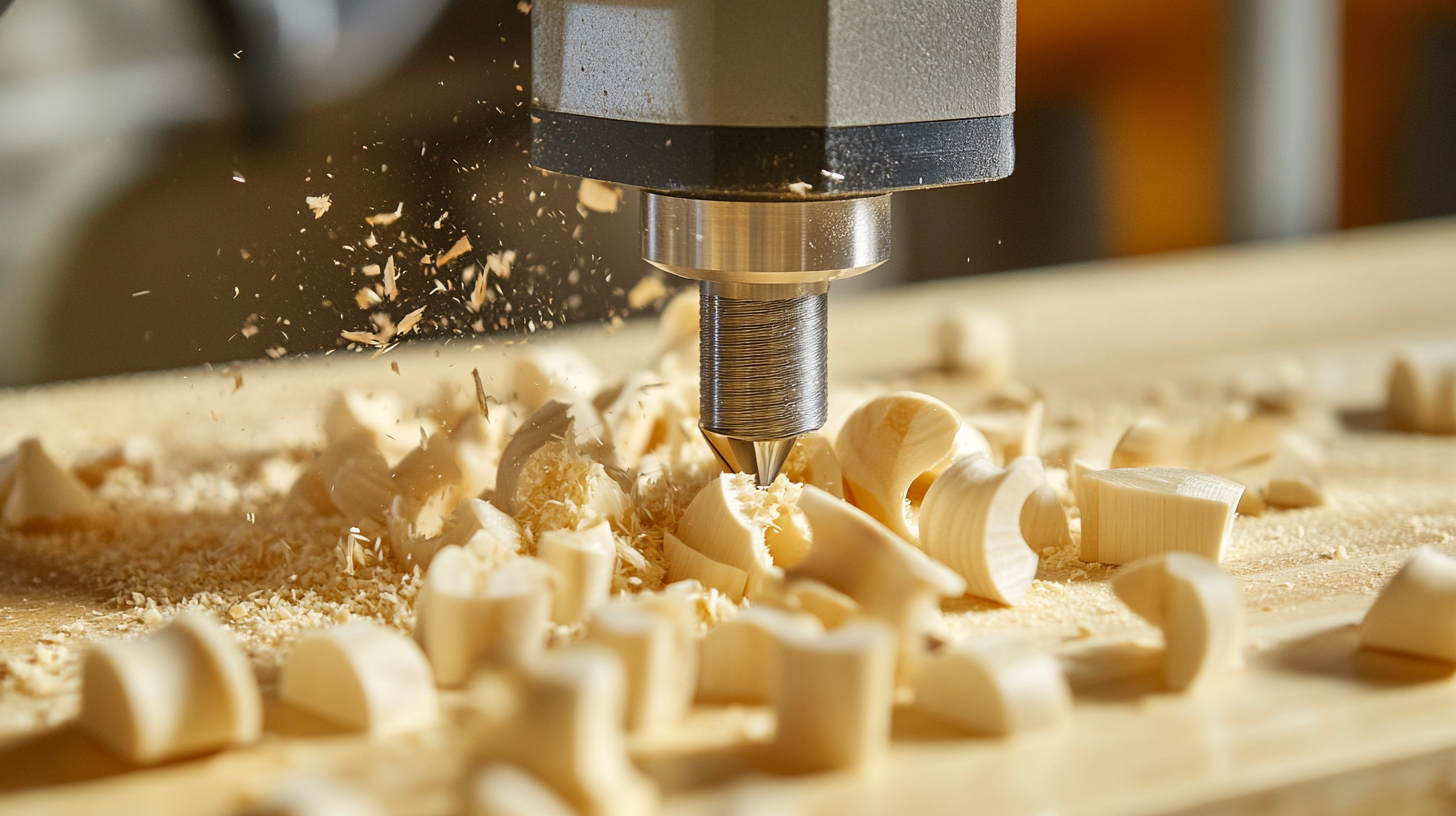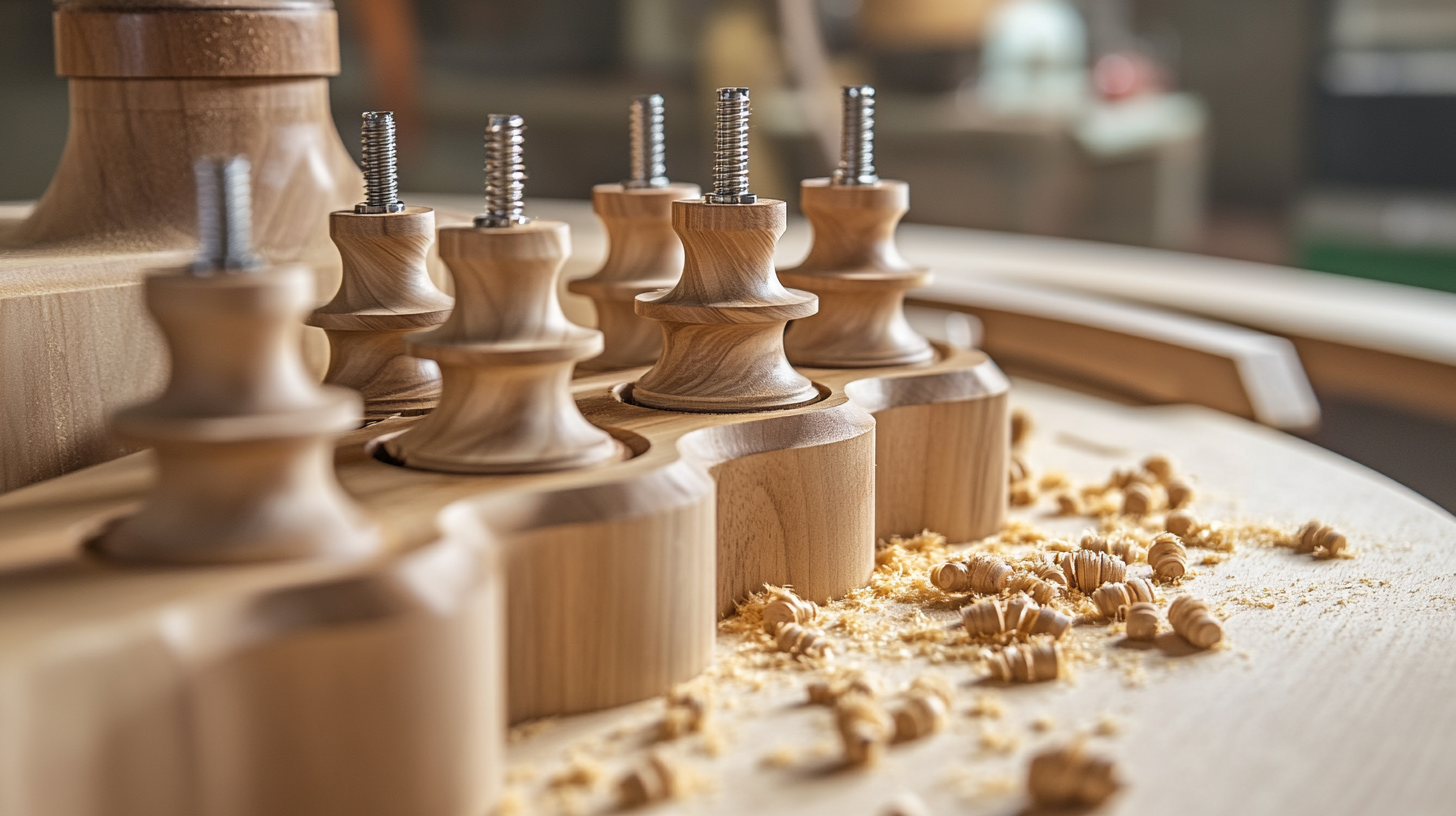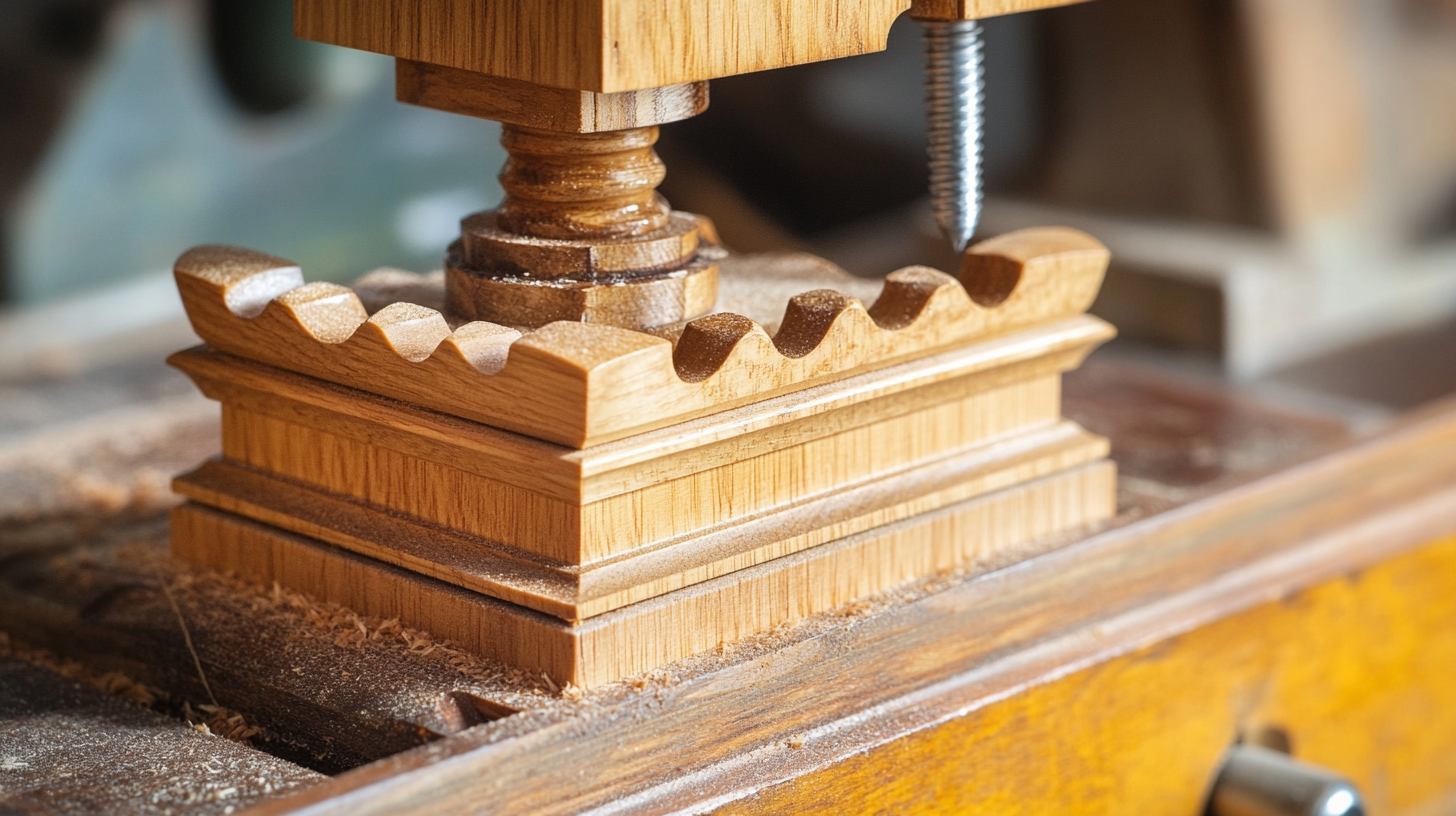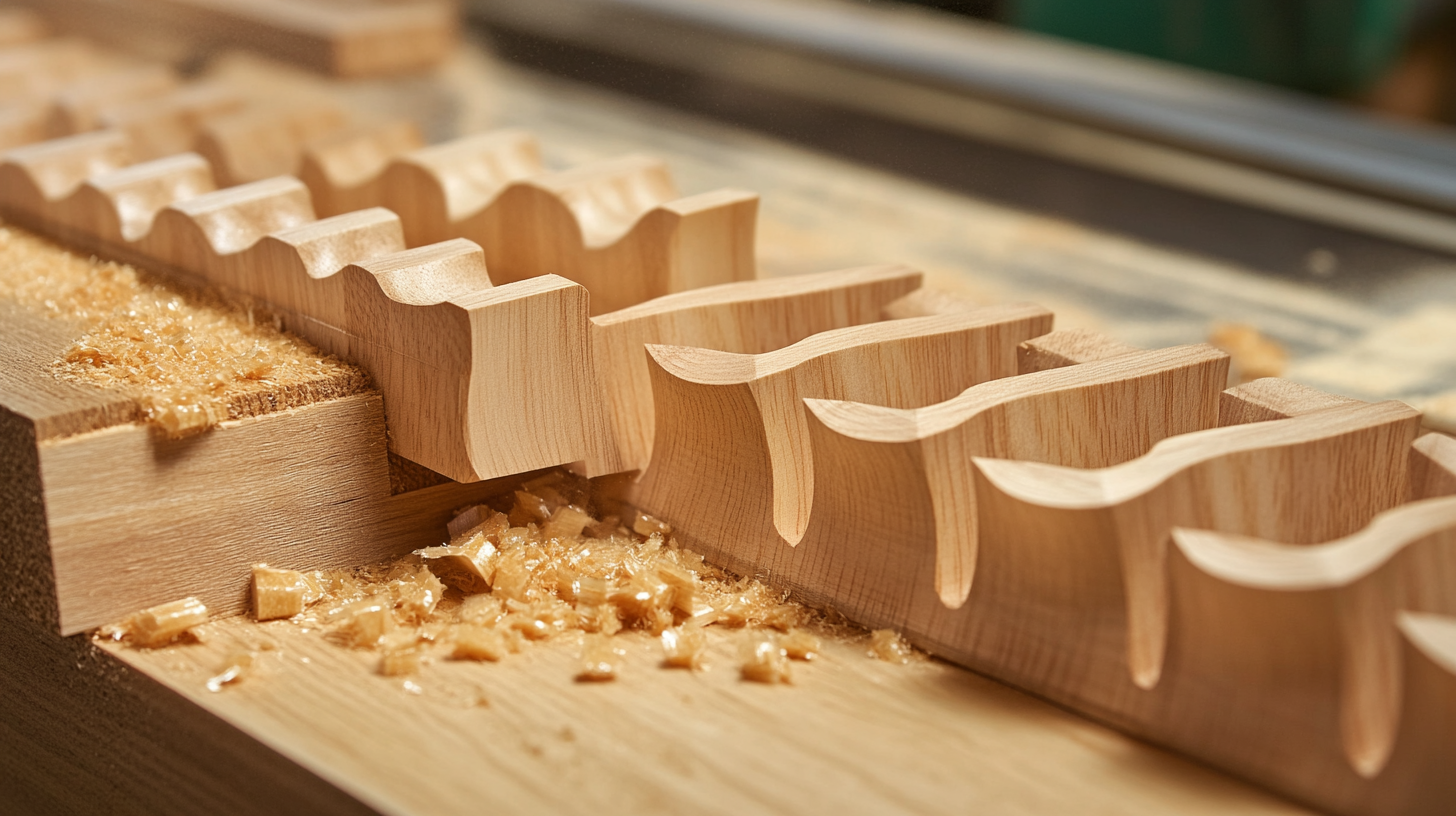When it comes to woodworking, achieving the perfect finish can often hinge on the tools you choose. Among these, Raised Panel Router Bits stand out as an essential component for creating stunning and intricate panel profiles in cabinetry and furniture. These specialized bits allow woodworkers to carve out elegant raised panels, adding depth and character to their projects. Whether you are a hobbyist looking to enhance your skills or a seasoned professional aiming to streamline your workflow, understanding how to select and effectively use Raised Panel Router Bits is crucial.
In this comprehensive guide, we will explore the various types of Raised Panel Router Bits available in the market, their unique features, and how to choose the right one for your specific needs. Additionally, we will provide practical tips on using these tools to achieve optimal results, ensuring that your woodworking projects not only look sophisticated but also stand the test of time. Join us as we delve into the world of Raised Panel Router Bits and unlock the potential to elevate your woodworking craftsmanship.

Raised panel router bits are essential tools for woodworkers aiming to create beautiful and intricate designs in cabinetry and furniture. Understanding the various types of raised panel router bits is crucial to maximizing their potential in your woodworking projects. Generally, these bits are categorized based on their profiles, which can greatly affect the final appearance of your work. Common types include cove, ogee, and straight bits, each providing distinct edges that can elevate the visual appeal of raised panels. Each raised panel router bit features unique characteristics that play a pivotal role in the woodworking process. The diameter of the bit is an important factor, as larger bits tend to create more pronounced profiles, while smaller bits offer finer details. Additionally, the number of cutting edges can influence the smoothness of the cut, with more edges providing a cleaner finish. When selecting a router bit, consider the material of the bit itself, with carbide-tipped options generally lasting longer and offering better precision compared to high-speed steel bits. Moreover, compatibility with your router is vital for achieving optimal results. Ensuring that the shank size of the bit matches your router will prevent vibrations and enhance control during operation. Understanding the feed rate and depth of cut is also essential; adjusting these parameters can lead to cleaner edges and reduce the risk of burning the wood. With a solid grasp of the types and features of raised panel router bits, you can confidently choose the right tools to enhance your woodworking projects.

When selecting raised panel router bits, it's essential to consider the material you will be working with. Different wood types, such as hardwood or softwood, require specific bit designs for optimal performance. A carbide-tipped bit is often recommended for hardwoods due to its durability and resistance to wear. Additionally, the choice of bit size plays a crucial role; larger bits can create deeper profiles but may demand more power from your router, whereas smaller bits might suit intricate designs better.
Another key factor to take into account is the profile of the raised panel. Raised panel router bits come in various profiles, each offering a unique aesthetic appeal. Common profiles include Ogee and Roman Ogee, providing distinct looks for your projects. Choosing a profile that complements the overall design of your furniture or cabinetry will enhance the final appearance. Furthermore, consider the number of passes needed to achieve your desired depth. Some bits may require multiple passes to reach the final shape, impact the efficiency of your workflow.
Lastly, it's crucial to evaluate the compatibility of the router bit with your router model. Check the shank size, as router bits typically come in either 1/4" or 1/2" shanks. Ensure your router can accommodate the chosen size for safe and effective operation. By paying attention to these key considerations, you can maximize the effectiveness of raised panel router bits and elevate the quality of your woodworking projects.

When it comes to woodworking, raised panel router bits are an essential tool that can elevate your projects from ordinary to extraordinary. Understanding the techniques for effective use of these bits is crucial for achieving professional results. First, ensuring proper setup is key. Secure your router on a stable surface, and always check the bit height to guarantee precise cuts. Additionally, make adjustments to the nibbler or fence settings to accommodate the specific thickness of your stock material. A well-prepared workspace allows for cleaner, more consistent cuts, which are fundamental in raised panel projects.
Another important technique is to master the feeding speed and direction. It’s advisable to feed the wood against the direction of the bit's rotation. This not only optimizes cut quality but also enhances safety during the routing process. Using a steady feed rate ensures that the bit doesn’t burn the wood or create an uneven panel finish. Moreover, experimenting with various feed speeds based on the wood type and bit size can yield different stylistic effects, allowing for more personalized craftsmanship.
Lastly, consider practicing your techniques on scrap wood before tackling your final project. This approach helps you fine-tune your speed and technique while reducing the risk of costly mistakes. It also allows you to visualize the finished product and make adjustments that align with your design vision. By integrating these effective techniques into your workflow, you can maximize the potential of your raised panel router bits, achieving stunning results in your woodworking endeavors.

When it comes to woodworking, the longevity of your raised panel router bits is crucial for maintaining high-quality results. A study by the Woodworking Institute reveals that inadequate maintenance can reduce the lifespan of router bits by up to 50%. This emphasizes the importance of a proactive approach to caring for your tools, ensuring they serve you well for numerous projects.
Routine cleaning is one of the most effective maintenance practices. Over time, resin and sawdust can accumulate on the blades, causing dullness and reducing cutting efficiency. Industry experts recommend using a simple solution of warm water and dish soap, coupled with a soft brush to gently scrub away debris. For tougher build-ups, a specialized bit cleaner can be employed, which is proven to restore up to 95% of the original cutting performance, thus extending the life of your bits significantly.
Proper storage and handling are equally essential. A report from the American Association of Woodworkers indicates that erratic storage practices contribute to damages like chipping and bending. Storing your router bits in a dedicated case with protective padding not only prevents physical damage but also keeps them organized and easily accessible. Additionally, always handle bits with care, ensuring they are not dropped or subjected to excess moisture, which can lead to corrosion.
Lastly, periodic sharpening is a key practice that can dramatically enhance the performance and lifespan of your router bits. According to data from The Tool Sharpening Institute, regularly sharpened tools can cut through wood with as much as 25% less effort, enhancing both precision and effectiveness. Investing time in sharpening not only keeps your work top-notch but also minimizes the risk of accidents caused by dull tools.
Raised panel router bits are essential tools for woodworkers looking to add a touch of elegance and sophistication to their projects. One of the most common applications of these bits is in the creation of cabinet doors. By utilizing raised panel techniques, woodworkers can achieve a beautiful, dimensional effect that enhances the overall appearance of the cabinetry. Whether you're making traditional Shaker-style doors or more elaborate designs, raised panel router bits provide the precision and versatility needed to create stunning results.
Another popular project that benefits from raised panel router bits is furniture making. Attributes like enhanced aesthetics and structural integrity make raised panels an excellent choice for tabletops, sideboards, and even headboards. The ability to customize the profile of the panel allows artisans to match the design to any style—be it rustic, modern, or classic. As a bonus, raised panels can help hide imperfections in the wood, making the finished piece look more polished and professional.
In addition to cabinetry and furniture, raised panel router bits are ideal for creating beautiful wall paneling and wainscoting. Adding raised panels to interior walls can transform a simple room into an elegant space, creating visual interest and depth. This technique is perfect for both residential and commercial settings, as it elevates the overall ambiance without the need for extensive remodeling. By incorporating raised panels into your wood projects, you can maximize both the functionality and aesthetic appeal of your woodworking creations.